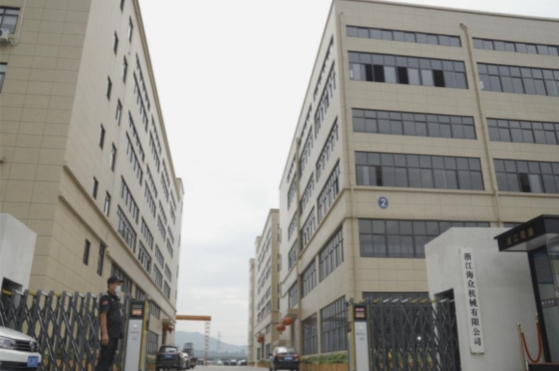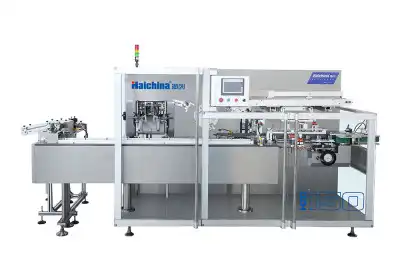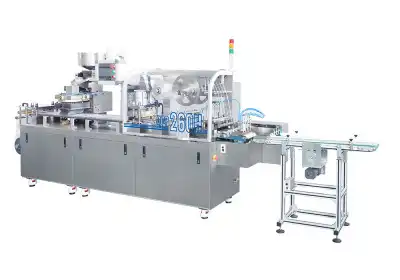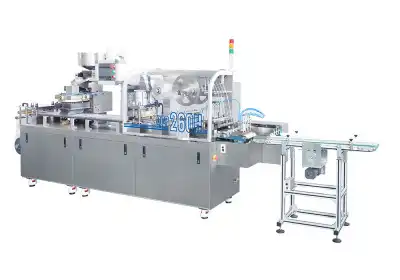Which Blistering Machine Is Best for Small-Scale Pharmaceutical Production?
For small-scale pharmaceutical production, the best blistering machine is typically a compact, semi-automatic model that balances efficiency with cost-effectiveness. These machines offer flexibility in packaging various tablet and capsule sizes while maintaining Good Manufacturing Practice (GMP) standards. Key features to look for include adjustable blister formats, easy changeover capabilities, and precise temperature control. Rotary-style blistering machines are often ideal, as they provide consistent output without requiring extensive floor space. Ultimately, the optimal choice depends on specific production needs, but machines that offer scalability and compliance with pharmaceutical regulations are generally most suitable for small-scale operations.
Understanding Blistering Machines for Pharmaceutical Packaging
Types of Blistering Machines
Blistering machines come in various configurations to suit different production scales. Rotary blistering machines are popular for their continuous operation and higher output. Flat-plate machines offer simplicity and are suitable for smaller batches. Thermoforming machines create blisters from plastic rolls, while cold-forming machines use aluminum foil for moisture-sensitive products. Each type has its advantages, and the choice depends on the specific needs of the pharmaceutical production line.
Key Components of a Blistering Machine
A typical blistering machine comprises several crucial components. The forming station shapes the blister cavities, while the filling station accurately places tablets or capsules into these cavities. The sealing station applies heat and pressure to seal the blisters with a backing material. Quality control systems, such as vision inspection units, ensure product integrity. Understanding these components helps in selecting the most appropriate machine for small-scale production needs.
Advantages of Blister Packaging in Pharmaceuticals
Blister packaging offers numerous benefits for pharmaceutical products. It provides excellent protection against moisture, light, and oxygen, preserving the medication's efficacy. The individual packaging of doses enhances patient compliance and reduces the risk of contamination. Blister packs also offer tamper-evidence, improving product safety. For small-scale producers, blister packaging can significantly extend product shelf life and improve marketability.
Factors to Consider When Choosing a Blistering Machine for Small-Scale Production
Production Capacity and Scalability
When selecting a blistering machine for small-scale pharmaceutical production, it's crucial to consider both current output requirements and future growth potential. A machine that can handle varying batch sizes efficiently is ideal. Look for models that offer adjustable speed settings and the ability to upgrade components as production needs evolve. This flexibility ensures that the investment remains valuable as the business expands.
Versatility in Packaging Formats
Small-scale producers often need to package a variety of products. A blistering machine that can accommodate different blister sizes, shapes, and materials provides valuable versatility. Quick-change tooling and adjustable settings for various tablet or capsule sizes are essential features. This adaptability allows for efficient production runs of different products without the need for multiple machines.
Compliance with Pharmaceutical Regulations
Adherence to pharmaceutical regulations is non-negotiable, even for small-scale operations. The chosen blistering machine must meet Good Manufacturing Practice (GMP) standards and be suitable for validation processes. Features like clean-in-place systems, materials that comply with food-grade requirements, and documentation capabilities for batch tracking are important considerations. Ensuring regulatory compliance from the outset prevents costly upgrades or replacements in the future.
Top Blistering Machine Options for Small-Scale Pharmaceutical Production
Semi-Automatic Rotary Blistering Machines
Semi-automatic rotary blistering machines offer an excellent balance of efficiency and control for small-scale operations. These machines typically feature a rotating turntable that moves blisters through various stations, including forming, filling, and sealing. They provide consistent output while allowing for manual oversight, making them ideal for smaller batch sizes. The rotary design often results in a more compact footprint, which is beneficial for facilities with limited space.
Thermoforming Blister Packaging Machines
Thermoforming blister packaging machines are versatile options for small-scale production. They create blisters from rolls of plastic material, offering flexibility in blister design. These machines can often handle a wide range of materials, including PVC, PET, and eco-friendly alternatives. For pharmaceutical companies looking to minimize waste and maximize customization options, thermoforming machines provide an attractive solution.
Cold-Forming Blistering Machines for Sensitive Products
For pharmaceuticals that are particularly sensitive to moisture or temperature, cold-forming blistering machines are an excellent choice. These machines use aluminum foil to create blister cavities without heat, preserving the integrity of sensitive medications. While typically slower than thermoforming machines, they offer superior protection for certain products. Small-scale producers dealing with moisture-sensitive drugs or those requiring extended shelf life should consider this option.
Conclusion
Selecting the right blistering machine for small-scale pharmaceutical production requires careful consideration of production needs, regulatory requirements, and future scalability. Semi-automatic rotary machines offer a good balance of efficiency and control, while thermoforming and cold-forming options provide specialized solutions for different product types. By evaluating factors such as output capacity, versatility, and compliance features, small-scale producers can find a blistering machine that not only meets current needs but also supports future growth in the competitive pharmaceutical market.
FAQs
What is the typical output of a small-scale blistering machine?
Small-scale blistering machines usually produce between 10 to 60 blisters per minute, depending on the model and configuration.
Can small-scale blistering machines handle both tablets and capsules?
Yes, most modern small-scale blistering machines are designed to package both tablets and capsules with adjustable settings.
How important is GMP compliance for small-scale pharmaceutical packaging?
GMP compliance is crucial regardless of production scale, as it ensures product quality and safety, and is often a regulatory requirement.
What maintenance is required for small-scale blistering machines?
Regular cleaning, lubrication of moving parts, and periodic inspection of sealing mechanisms are typically required to maintain optimal performance.
Are there eco-friendly options for blister packaging in small-scale production?
Yes, many manufacturers now offer blistering machines compatible with biodegradable or recyclable packaging materials for environmentally conscious production.
Expert Blistering Machine Solutions | Haichina
At Haichina, we are a trusted blistering machine manufacturer, specializing in providing top-quality blistering machines tailored for small-scale pharmaceutical production. Our range includes compact, efficient models that meet GMP standards and offer scalability as your business grows. With over 20 years of industry experience, our expert engineers ensure you get a customized packaging solution that maximizes productivity and maintains product integrity. For unparalleled blistering machine expertise and support, contact our factory at [email protected] and elevate your pharmaceutical packaging process today.
References
Johnson, M. (2022). Advancements in Pharmaceutical Packaging Technology. Journal of Drug Delivery Science and Technology, 68, 103-115.
Smith, A. et al. (2021). Comparative Analysis of Blistering Machines for Small-Scale Production. International Journal of Pharmaceutical Sciences and Research, 12(4), 2187-2198.
Patel, R. (2023). GMP Compliance in Pharmaceutical Packaging: A Comprehensive Guide. Regulatory Affairs Professionals Society.
Brown, L. (2022). Sustainable Packaging Solutions in the Pharmaceutical Industry. Green Chemistry Letters and Reviews, 15(2), 231-245.
Zhang, Y. et al. (2023). Optimization of Blister Packaging Processes for Moisture-Sensitive Drugs. AAPS PharmSciTech, 24(3), 112.
Thompson, K. (2021). The Future of Small-Scale Pharmaceutical Production: Trends and Innovations. Pharmaceutical Technology, 45(9), 44-52.

Submit the form now to get a unique quote!

ZHEJIANG HAIZHONG MACHINERY CO., LTD.
Popular Blogs
-
 Successful caseProducts and services
Successful caseProducts and servicesHow to Train Employees to Operate a Bottle Packing Machine Effectively?
-
 Successful caseIndustry insights
Successful caseIndustry insightsThe Blister Packaging Process: A Complete Step-by-Step Guide
-
 Successful caseComparative analysisIndustry insights
Successful caseComparative analysisIndustry insightsWhat Type of PVC Is Best for Blister Packing Machines?